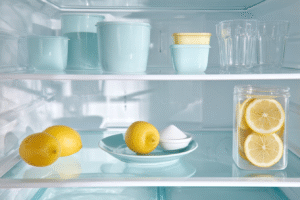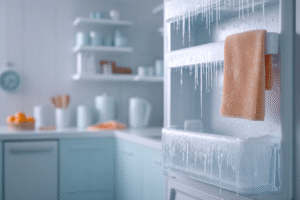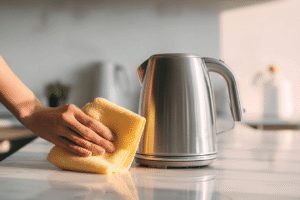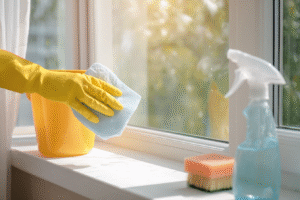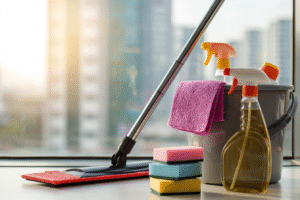Summarise this article with:
Your dishwasher works hard to keep your dishes spotless, but when did you last return the favour? We connect you with the knowledge to give your trusty appliance the deep clean it deserves. We’ll guide you through every step while keeping it simple and effective.
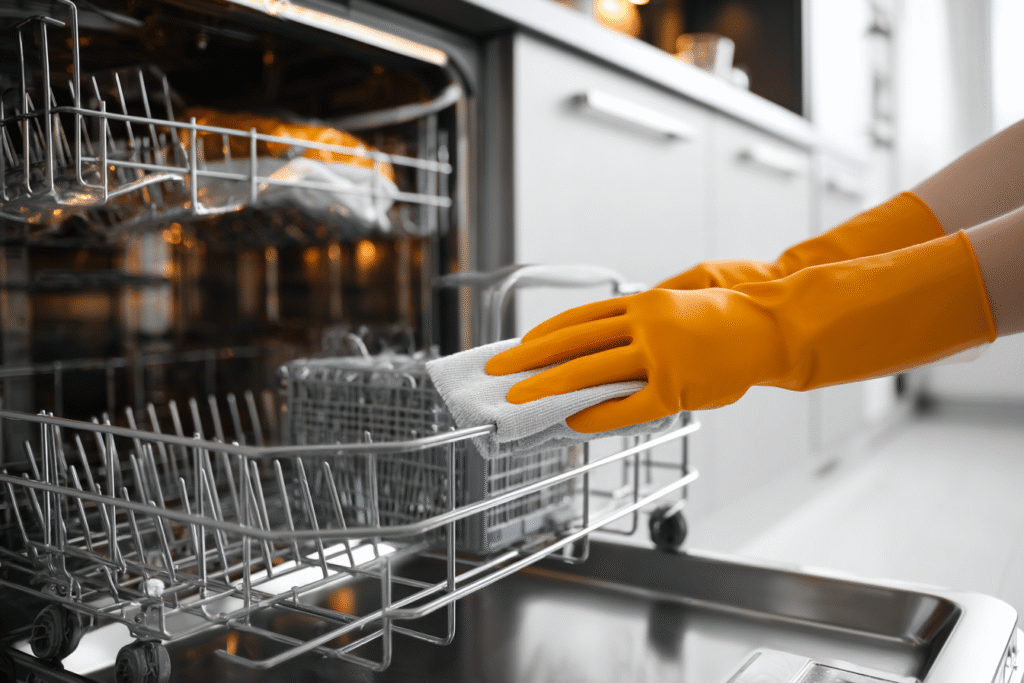
Signs Your Dishwasher Needs a Deep Clean
Spotting the Warning Signs
Wondering if your machine needs attention? Here are the telltale signs that shouldn’t be ignored:
- Foul smells coming from your empty dishwasher – a clear indicator of food particles and bacteria growth lurking in hidden corners
- Poor cleaning performance with dishes coming out still dirty or with soap scum and residue clinging to surfaces
- Standing water pooling at the base of the dishwasher after a cycle, often pointing to clogged filters
- White spots or mineral deposits on your glassware, suggesting build-up in the spray arms
- Visible grime around the rubber seal of the dishwasher door
Trust your senses – if something seems off, it probably is. These warning signs are your machine’s way of asking for help before small issues become bigger headaches.
What Happens When You Skip Maintenance
Neglecting your dishwasher’s upkeep creates a domino effect of problems that’ll make you wish you’d acted sooner:
- Bad odours intensify as food particles rot in filters and around spray arms, turning your kitchen into an unpleasant space
- Poor cleaning performance worsens dramatically – dishes emerge grimy with soap scum while your machine struggles against build-up
- Costly repairs become inevitable when clogged components force your dishwasher to work harder, potentially damaging internal mechanisms
- Bacteria and mould growth flourish in the warm, moist environment, particularly around the dishwasher door seals
The bottom of the dishwasher becomes a breeding ground for problems that white vinegar and baking soda could have prevented. What starts as a simple maintenance task transforms into expensive headaches that could’ve been avoided with regular attention.
What You’ll Need for the Best Dishwasher Clean
Essential Cleaning Supplies
Getting your dishwasher cleaners and tools sorted makes all the difference. Here’s what you’ll need for a proper clean:
| Supply | Purpose |
|---|---|
| White vinegar | Cuts through mineral deposits and neutralises odours |
| Baking soda | Tackles stubborn stains and freshens naturally |
| Dish soap | Perfect for scrubbing removable parts |
| Damp cloth or microfibre towel | Wipes down surfaces without scratching |
| Small brush (old toothbrush works brilliantly) | Reaches tight spots around seals |
Frequency matters too – having these supplies on hand means you can tackle maintenance the easy way. Most items are probably sitting in your kitchen cupboards already, making this a budget-friendly deep clean.
Stock up on dishwasher cleaners if you prefer commercial options, but these household staples work just as well for most cleaning tasks.
Natural Cleaner Alternatives
Prefer keeping things natural? Your kitchen cupboards hold powerful cleaning allies that work brilliantly without harsh chemicals.
White vinegar tackles mineral deposits and neutralises odours naturally. Place a cup in a dishwasher-safe bowl on the top rack and run a hot cycle. You can read full guide of white vinegar cleaning here.
Baking soda cleaning freshens and removes stubborn stains. Sprinkle a cup on the bottom of your empty dishwasher, then run a short hot cycle for best results.
Lemon juice provides antibacterial properties with a fresh scent. Squeeze one lemon into a bowl, place it on the top rack, and let the hot water do the work.
These natural options are gentler on your machine and the environment whilst delivering the deep clean your dishwasher craves.
Safety Preparation Steps
Before you dive into cleaning, taking proper safety measures protects both you and your dishwasher from potential damage.
Power down completely – switch off and unplug your dishwasher at the mains to eliminate any electrical hazards during cleaning.
Remove all items – clear out dishes, cutlery, and removable racks so you can access every corner safely without obstruction.
Check the temperature – allow your machine to cool down after recent use, as internal surfaces and components can remain hot enough to cause burns.
Wear protective gloves when handling cleaning products or reaching into tight spaces where sharp edges might be present.
Ensure good ventilation – open windows or turn on extractor fans, especially when using white vinegar or commercial cleaners.
These simple precautions set you up for a safe, thorough clean without any nasty surprises.
Step-by-Step Dishwasher Cleaning Process
Clean and Check the Filter
Start with your dishwasher filter – the hardest-working component that traps food particles before they can recirculate onto clean dishes. You can read our full guide to know more about cleaning your filter.
Remove the bottom rack to access the cylindrical filter at the base of your machine. Twist it counter-clockwise to unlock and lift out gently.
Rinse under warm running water to dislodge loose debris, then soak in warm soapy water for stubborn build-up. Use a soft brush to scrub away trapped particles without damaging the mesh.
- Check for cracks or damage while cleaning
- Rinse thoroughly until water runs clear
- Allow to air dry completely
Inspect the filter housing where it sits – wipe away any debris with a damp cloth before reinstalling. Twist clockwise until secure.
Your spray arms are next on the cleaning agenda.
Remove Food Debris and Inspect Spray Arms
Locate the spray arms beneath each rack – these rotating components distribute water throughout your machine but can harbour stubborn food particles in their tiny holes.
Remove the lower spray arm by lifting it straight up or twisting counter-clockwise, depending on your model. The upper arm typically unscrews from underneath.
Rinse under warm water whilst rotating to flush out loose debris, then inspect each spray hole for blockages:
- Use a toothpick to gently clear clogged holes
- Soak arms in white vinegar solution for 15-30 minutes for stubborn deposits
- Scrub with a soft brush to remove mineral build-up
- Check for cracks or damage that could affect performance
Test the water flow by running water through each arm before reinstalling. Properly functioning spray arms mean spotless dishes every time.
Wipe Down Door Seals and Interior
The rubber seals around your dishwasher door collect grime, food particles, and moisture – creating perfect conditions for mould and unpleasant odours if left unchecked.
Focus on the lower door seal first, as this area bears the brunt of splashing and debris. Gently pull back the rubber gasket to reveal hidden gunk that accumulates in the folds.
Use warm soapy water and a soft cloth to wipe down all seal surfaces, paying particular attention to:
- The bottom door seal where most debris settles
- Around the soap dispenser area
- Any grooves or folds in the rubber
Tackle stubborn spots with an old toothbrush dipped in white vinegar solution. The interior door surfaces also need attention – wipe them down thoroughly to remove grease splatters and detergent residue.
Dry everything completely with a clean towel to prevent moisture build-up that encourages bacterial growth.
Run a Hot Vinegar Cleaning Cycle
Now comes the deep-cleaning magic that transforms your machine from the inside out. White vinegar breaks down mineral deposits, soap scum, and lingering odours whilst sanitising every surface the water touches.
Fill a dishwasher-safe bowl or mug with one cup of white vinegar and place it securely on the top rack. Make sure it’s positioned upright so it won’t tip over during the cycle.
Select your hottest wash cycle – typically the heavy or pots-and-pans setting works brilliantly. Don’t add any detergent or other cleaning products during this cycle.
- Run the complete cycle without interruption
- The hot water activates the vinegar’s cleaning properties
- Steam helps the vinegar reach every corner and crevice
- Allow the cycle to finish completely before opening the door
Leave the door slightly ajar once finished to let the interior air dry naturally. You’ll notice how fresh and clean everything smells – that’s the vinegar working its magic on built-up grime and bacteria.
Follow with Baking Soda Deep Clean
Complete the cleaning process with baking soda’s natural deodorising power. This final step tackles stubborn odours and stains that vinegar alone might miss.
Sprinkle one cup of baking soda evenly across the bottom of your empty dishwasher – don’t worry about perfect coverage, as the water circulation will distribute it effectively during the cycle.
Select a short hot cycle and run without any detergent or dishes:
- The baking soda will fizz and foam, lifting away remaining residue
- Stubborn stains around the drain area get particular attention
- Any lingering smells from previous loads disappear completely
Let the cycle finish completely before opening the door. You’ll find your dishwasher interior looking brighter and smelling absolutely fresh.
Wipe down any remaining baking soda residue with a damp cloth if needed, though most will rinse away naturally. Your machine is now ready to deliver spotless results every time you run it.
How Often Should You Clean Your Dishwasher?
Daily and Weekly Maintenance Tasks
Keeping your dishwasher in tip-top shape doesn’t require marathon cleaning sessions – just consistent small efforts that prevent bigger problems down the line.
Daily tasks take seconds but save you hours later:
| Daily Tasks | Weekly Tasks |
|---|---|
| Scrape plates before loading – no need to rinse completely | Clean the filter with warm soapy water |
| Wipe door seals with a damp cloth after use | Check spray arms for blockages |
| Leave door slightly open after cycles to air-dry | Wipe down exterior and control panel |
| Check for leftover food at the bottom | Run an empty hot cycle if heavily used |
Weekly maintenance keeps everything running smoothly without the drama of emergency deep cleans. These simple habits mean your machine works harder so you don’t have to.
Remember – a few minutes of daily attention beats hours of scrubbing stubborn build-up later.
Descale Dishwasher
Hard water leaving chalky white spots on glasses? Time for descaling action. Descaling removes mineral buildup that makes your appliance work harder than necessary.
Check these signs that indicate descaling is overdue:
| Descaling Frequency | Water Type | Key Indicators |
|---|---|---|
| Every 3 months | Hard water areas | White residue on dishes, reduced cleaning power |
| Every 6 months | Average water | Occasional spots, slower cycles |
| Annually | Soft water | Minimal buildup, maintenance only |
Use white vinegar or citric acid for natural descaling, or grab a commercial descaler from the supermarket. Run the hottest cycle with descaling solution in an empty machine.
Pro tip: If you live in a hard water area, consider fitting a water softener to prevent future mineral accumulation. Regular descaling keeps heating elements efficient and extends your appliance’s lifespan significantly.
Monthly Deep Cleaning Schedule
Set yourself up for success with a proper monthly routine that tackles the deeper grime your weekly maintenance might miss.
Schedule your deep clean for the same date each month – whether that’s the first weekend or mid-month payday, consistency makes all the difference. Pick a time when you won’t need the dishwasher for a few hours.
Your monthly deep clean checklist:
- Remove and soak all removable parts (racks, cutlery holders, spray arms)
- Scrub the filter thoroughly with an old toothbrush
- Run the full vinegar and baking soda treatment as outlined above
- Check door hinges and seals for wear or damage
- Inspect the drain area for stubborn debris
This monthly investment keeps your machine running like new whilst preventing those expensive repair calls that nobody wants to deal with.




